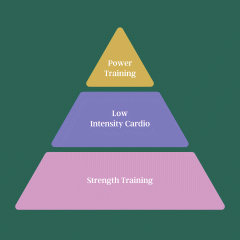The list of teaching techniques is ever-expanding as there are multiple ways for us to gain knowledge. As a result, there are multiple techniques out there that leverage those particular skills. One such technique I want to share with you is learning by doing.
This technique has been around for a long time, and it’s a surprisingly effective one thanks to the various perks that come with it. Also called experiential learning, I’ll be sharing with you my knowledge on the subject, what it is deep down, and why it’s such an effective learning tool.
What Is Learning by Doing?
Learning by doing is the simple idea that we are capable of learning more about something when we perform the action.
For example, say you’re looking to play a musical instrument and were wondering how all of them sound and mix. In most other techniques, you’d be playing the instrument all by yourself in a studio. Learning by doing instead gives you a basic understanding of how to play the instrument and puts you up on a stage to play an improvised piece with other musicians.
Another way to think about this is by taking a more active approach to something as opposed to you passively learning about it. The argument is that active engagement provides deeper learning and that it’s okay if you make mistakes as you learn from those as well. This mentality brought forth a new name for this technique: experiential learning.
What Are Its Benefits?
Experimental learning has been around for eons now. It was Aristotle who wrote that “for the things we have to learn before we can do them, we learn by doing them.”
Over the years, that way of thinking changed and developed and for a time was lost once computers were integrated into schools. It’s only been in recent years where schools have adopted this technique again. It’s clear why teachers are encouraging this as it offers five big benefits.
1. It’s More Engaging and More Memorable
The first benefit is that it’s more engaging and memorable. Since this requires action on your part, you’re not going to be able to weaken your performance. This is big since, traditionally, you’d learn from lectures, books, or articles, and learners could easily read—or not read—the text and walk away with no knowledge at all from it.
When you are forced into a situation where you have to do what you need to learn, it’s easier to remember those things. Every action provides personalized learning experiences, and it’s where motivation is built. That motivation connects to what is learned and felt. It teaches that learning is relevant and meaningful.
Beyond that, this experience allows the opportunity for learners to go through the learning cycle that involves extended effort, mistakes, and reflection, followed by refinement of strategies.
2. It Is More Personal
Stemming from the reason mentioned above, learning by doing offers a personal experience. Referring back to the cycle of effort, mistakes, reflection, and refinement, this cycle is only possible through personal emotions—the motivation and realization of knowledge of a particular topic tying into your values and ideals.
This connection is powerful and thus, offers a richer experience than reading from a book or articles such as this one. That personal connection is more important as it encourages exploration and curiosity from learners.
If you’ve always wanted to bake a cake or cook a unique dish, you could read up on it or watch a video. Or you could get the ingredients and start going through it all yourself. Even if you make mistakes now, you have a better grasp of what to do for the next time you try it out. You’re also more invested in that since that’s food that you made with the intention of you having it.
3. It Is Community-Connected
Learning by doing involves the world at large rather than sitting alone in your room or a library stuck in a book. Since the whole city is your classroom technically, you’re able to leverage all kinds of things. You’re able to gather local assets and partners and connect local issues to larger global themes.
This leans more into the personal aspect that this technique encourages. You are part of a community, and this form of learning allows you to interact more and make a connection with it—not necessarily with the residents but certainly the environment around it.
4. It’s More Integrated Into People’s Lives
This form of learning is deeply integrated into our lives as well. Deep learning occurs best when learners can apply what they’ve learned in a classroom setting to answer questions around them that they care about.
Even though there is a lot of information out there, people are still always asking “what’s in it for me?” Even when it comes to learning, people will be more interested if they know that what they are learning is vital to their very way of life in some fashion. It’s forgettable if they’re unable to tie knowledge in with personal aspects of their lives. Thus, experiential learning makes the application of knowledge simpler.
5. It Builds Success Skills
The final benefit of learning by doing is that it builds up your skills for success. Learning by doing encourages you to step out of your comfort zone, discover something new, and try things out for the first time. You’re bound to make a mistake or two, but this technique doesn’t shame you for it.
As a result, learning by doing can build your initiative for new things as well as persistence towards growth and development in a field. This could also lead to team management and collaboration skill growth. These are all vital things in personal growth as we move towards the future.
How to Get Started
While all these perks are helpful for you, how are you going to start? Well, there are several different approaches that you can take with this. Here are some of them that come to mind.
1. Low-Stakes Quizzes
In classroom settings, one way to introduce this technique is to have many low-stakes quizzes. These quizzes aren’t based on assessing one’s performance. Instead, these quizzes are designed to have learners engage with the content and to generate the learned information themselves.
Research shows that this method is an effective learning technique. It allows students to improve their understanding and recall and promotes the “transfer” of knowledge to other settings.
2. Type of Mental Doing
Another approach is one that Psychologist Rich Mayer put together. According to him, learning is a generative activity. His knowledge and the research done in his lab at Santa Barbara have repeatedly shown that we gain expertise by doing an action, but the action is based on what we already know.
For example, say you want to learn more about the Soviet dictator Stalin. All you need to do is link what you do know—that Stalin was a dictator—and link it to what you want to learn and retain. Stalin grew up in Georgia, killed millions of people, centralized power in Russia, and assisted in the victory of World War 2. This technique even applies to the most simple of memory tasks as our brain learns and relearns.
3. Other Mental Activities
The final method I’ll share with you is taking the literal approach—getting out there and getting your hands dirty so to speak. But how you go about that is up to you. You could try reading an article and then going out and applying it immediately—like you could with this article. Or maybe you could find further engagement through puzzles or making a game out of the activity that you’re doing.
For example, if you wanted to learn about animal behavior patterns, you can read about them, go out to watch animals, and see if they perform the specific behaviors that you read about.
Final Thoughts
Learning by doing encourages active engagement with available materials and forces you to work harder to remember the material. It’s an effective technique because it helps ingrain knowledge into your memory. After all, you have a deeper personal connection to that knowledge, and you’ll be more motivated to use it in the future.
With that in mind, I encourage you to take what you’ve learned from reading this article and apply that in the real world. It’s only going to benefit you as you grow.
More Articles About Learning by Doing
Featured photo credit: Van Tay Media via unsplash.com





























































